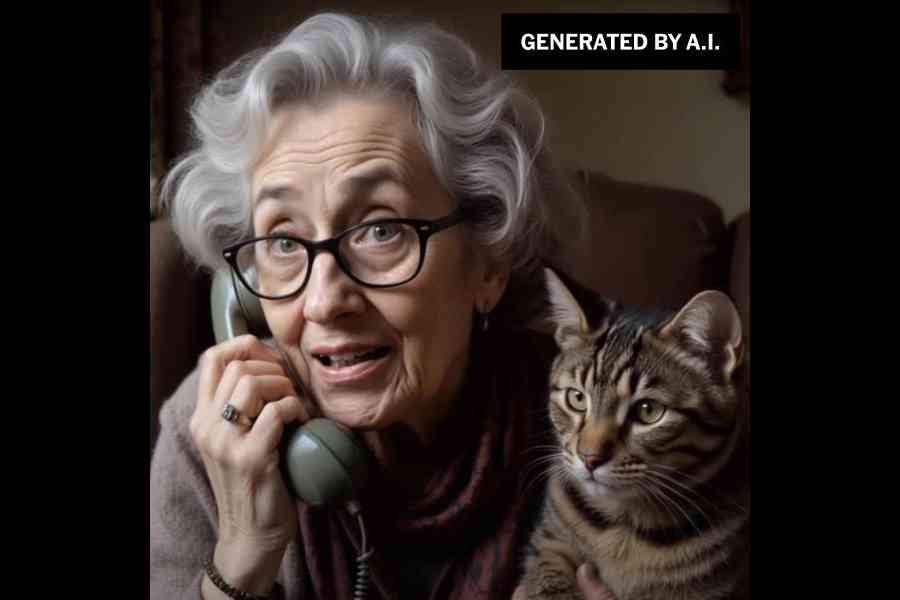Daisy Harris likes birds — there’s one outside her window. Her cat is named Fluffy, and she’d love to tell you about her knitting hobby. She likes tea and biscuits. And she just can’t seem to figure out this Internet thing.
But perhaps you can explain it just one more time?
That’s the general vibe of a chat with Daisy Harris, an AI-generated granny unveiled this month by the big British phone company O2, as part of its efforts to curb phone scammers. She doesn’t have a badge, or a warrant, or any way to really stop them. But when an unlucky fraudster dials her number, Daisy does have the power to waste unlimited amounts of their time.
There are plenty of human scambaiters out there — people who identify would-be thieves and turn the tables, leading them on meandering conversations that keep them from calling other potential victims. Unlike them, Daisy is free of encumbrances like the need to sleep.
“These people can’t just talk to thousands of scammers,” said Morten Legarth, who helped develop Daisy with VCCP, an advertising agency in London, UK. “But there’s an idea that AI can.”
Phone scams have reached mind-boggling levels: tens of millions of scam calls rocketed around the world every day last year, according to the phone security company Hiya. An anti-scam consortium says that more than $1 trillion was stolen, often when targets unsuspectingly turned over bank details, passwords or other personal information.
The Internet has only made these schemes easier, and while scammers don’t discriminate, older adults are seen as easy prey. In one British study, 40 per cent of people older than 75 reported getting scam calls at least monthly, if not daily.
Daisy, with her befuddlement about technology and eagerness to engage, is meant to come across, at least initially, as the perfect target. Her developers said they leaned into expectations, sometimes using their own grandmothers for inspiration.
“I drew a lot from my gran. She always went on about the birds in her garden,” said Ben Hopkins, who also worked on the VCCP project. Instead of using a voice actor to train Daisy, the team opted to use one of its colleagues’ grandmothers, who came in for some tea and recorded hours of dialogue.
A prolific scambaiter based in Northern Ireland who posts on YouTube under the name Jim Browning worked with O2 and VCCP in developing Daisy, pumping her full of techniques to keep scammers on the phone. Among them: go on lots of tangents on topics like hobbies and your family, and feign technological ineptitude.
In one instance, three phone scammers teamed up on a call that lasted nearly an hour, trying to get Daisy to type “www.” into a web browser.
Still, given the sheer volume of scam calls, Daisy’s efforts are less a blockade than a small speed bump. O2 customers can’t forward shady calls to Daisy; instead, she answers a few different phone numbers out of the vast haystack of digits that scammers can dial.
“Although it does disrupt operations on a practical level, it doesn’t stop fraud more broadly in any meaningful sense,” said Elisabeth Carter, an associate professor of criminology and a forensic linguist at Kingston University London in the UK.
Carter advised against trying to follow Daisy’s lead in messing with scammers. As satisfying as it may feel, “the best thing to do if you receive a call from a fraudster is to not engage, to hang up and report it”, she said.
NYTNS











